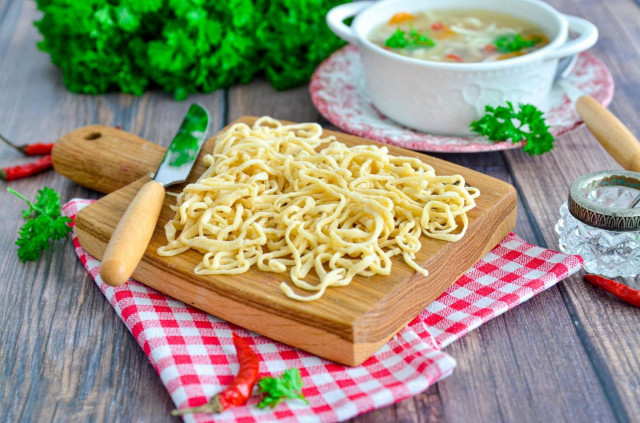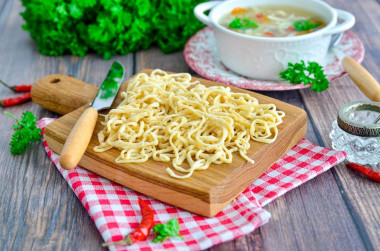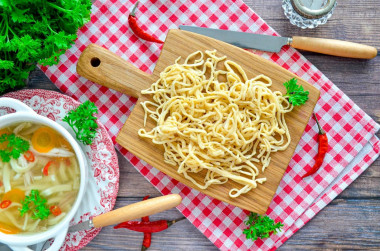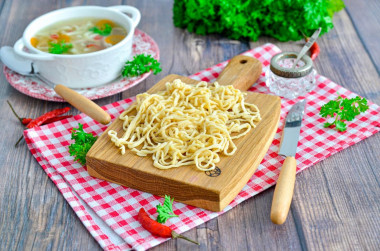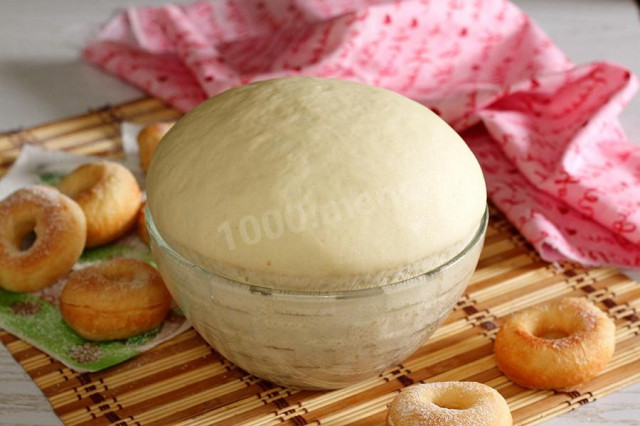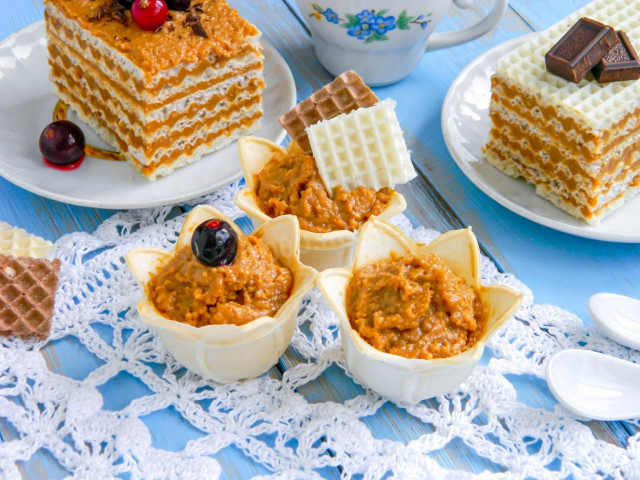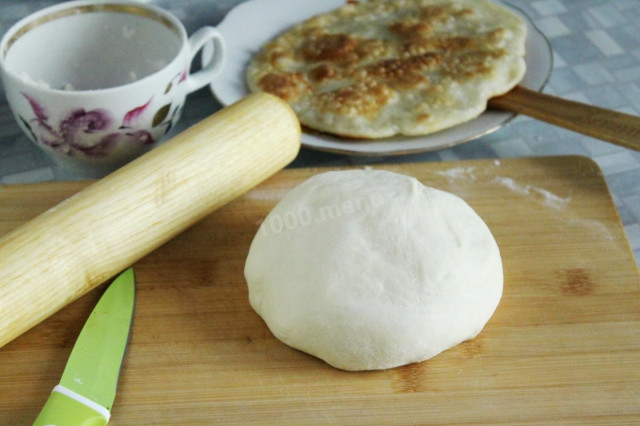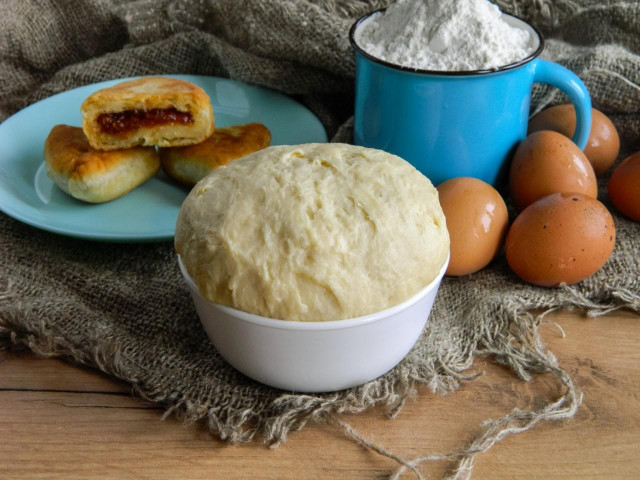Composition / ingredients
Step-by-step cooking
Step 1:
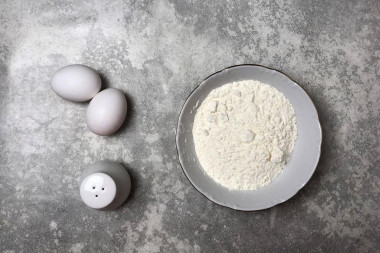
How to make homemade egg noodles? Prepare the products. In this recipe, the proportions are very simple — for every 100 grams of flour, one egg and a little salt, a pinch are taken. Instead of whole eggs, you can take only yolks, but I prefer to use eggs completely.
Step 2:
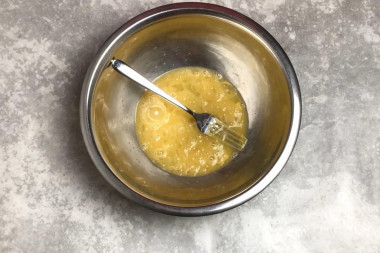
Wash the eggs, dry them and drive them into a deep bowl. Add salt and beat the eggs with a fork. Just mix the yolks with the whites, so no mixers are needed here.
Step 3:
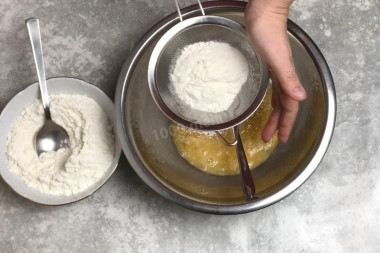
Start sifting flour into eggs in portions. Keep in mind that you may take more or less flour.
Step 4:
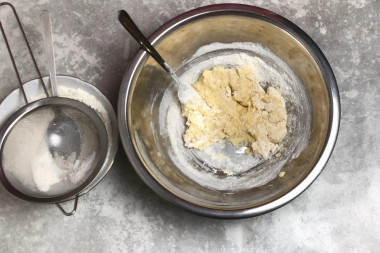
After each serving, stir it, at first it will be convenient to do it with a fork. Then, with each serving, the dough will become thicker.
Step 5:
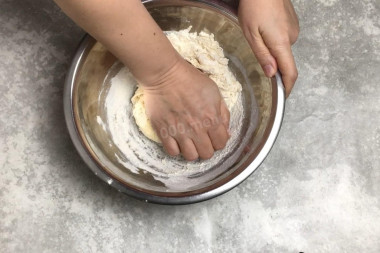
When all the flour is added, start kneading with your hands. In general, noodles can be made both in a bread maker and in a planetary mixer. I like to work with my hands.
Step 6:
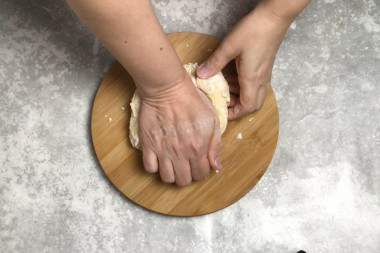
When all the flour has interfered with the dough, transfer it to the table and continue kneading on it. The dough is without water, so it turns out very cool.
Step 7:
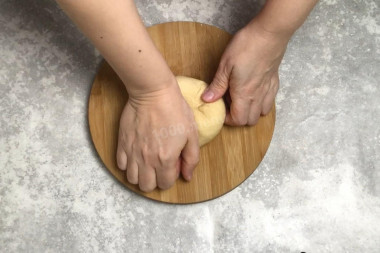
Kneading at first will not be very easy, but then the dough will begin to become more elastic, and the work will be more fun.
Step 8:
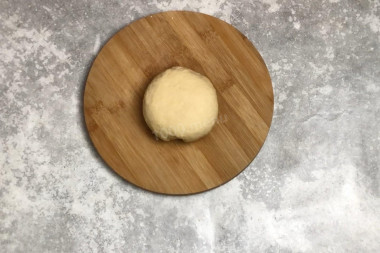
As a result, you should get an absolutely smooth and completely non-sticky dough. Assemble it into a ball, and then wrap it in a film or cover it with a towel. Leave the dough for 30 minutes. During this time, all the remaining moisture from the eggs will be absorbed into the flour and gluten, which is responsible for elasticity, will develop well in it.
Step 9:
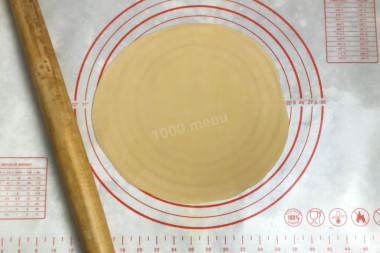
Divide the remaining dough into 4 parts. Leave one on the table, wrap the other three again so that they don't get caught. Sprinkle the table with flour and roll out the remaining part with a rolling pin into a very thin layer, 1-2 mm. The thinner the dough is, the tastier the noodles will turn out.
Step 10:
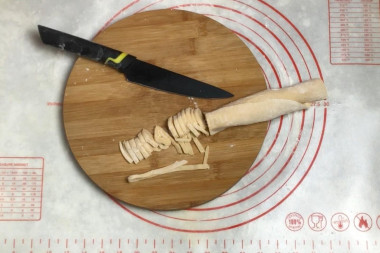
The resulting layer is well sprinkled with flour on both sides and roll into a roll. With a sharp knife, cut the roll into thin rings, 3-4 mm wide.
Step 11:
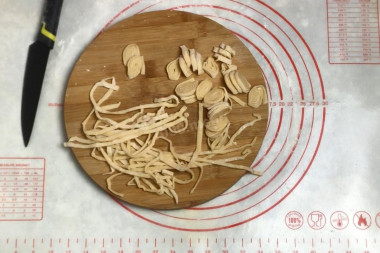
Untwist each ring, due to the fact that the dough was sprinkled with flour, it will be easy to do this.
Step 12:
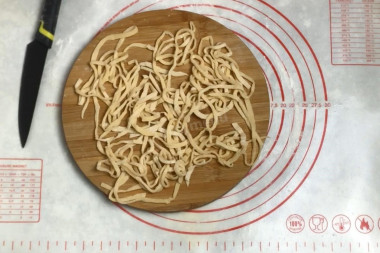
Lightly dust the finished noodles with flour again and leave them on the table until completely dry, if you plan to store them, or for a couple of hours if you want to cook right away.
Step 13:
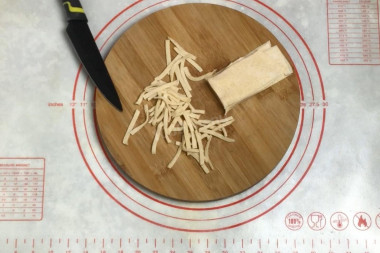
There is another way to slice homemade noodles. Cut the rolled layer into identical strips, fold them on top of each other and cut into thin strips. Such noodles are more convenient to use for filling broths.
Step 14:
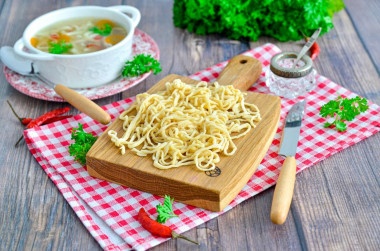
Put the dried noodles in a container and store in a cool, dry place. Such noodles are prepared like ordinary pasta. Check the readiness for taste, the cooking time depends on the thickness and quality of homemade noodles.
Be sure to wash the eggs before use, as even the seemingly clean shell may contain harmful bacteria. It is best to use food detergents and a brush.
Be prepared for the fact that flour may need more or less than indicated in the recipe. Focus not on the amount of flour, but on the desired consistency of the dough. To avoid mistakes, read about flour and its properties!
It is important to sift flour to saturate it with oxygen. Then the baking will turn out to be airy and will rise well when baking.
Caloric content of the products possible in the composition of the dish
- Chicken egg - 157 kcal/100g
- Egg white - 45 kcal/100g
- Egg powder - 542 kcal/100g
- Egg yolk - 352 kcal/100g
- Ostrich egg - 118 kcal/100g
- Whole durum wheat flour fortified - 333 kcal/100g
- Whole durum wheat flour universal - 364 kcal/100g
- Flour krupchatka - 348 kcal/100g
- Flour - 325 kcal/100g
- Salt - 0 kcal/100g

